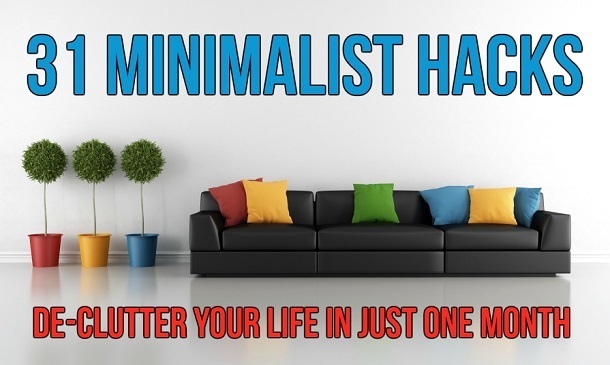
Minimalists realize that the years we spend working, saving, paying a mortgage and needlessly accumulating a mass of ‘stuff’ don’t actually equate to happiness.
They believe that our possessions only serve to distract us from what’s really important – living a full, meaningful and joyous life.
Today the average US person has as much individual space in their home as an entire 1950s family shared. Naturally, you would think these bigger houses could cope with all our material possessions but, scarily, there are now more self-storage facilities in America than McDonald’s restaurants!
At the same time, research says that Americans are more depressed now than they have been in decades.
Clearly, material goods don’t build happiness…so maybe minimalism is the way to go!
Why not check out these 31 ways to de-clutter your home and life and see if it works for you?
Write down your reasons for de-cluttering.
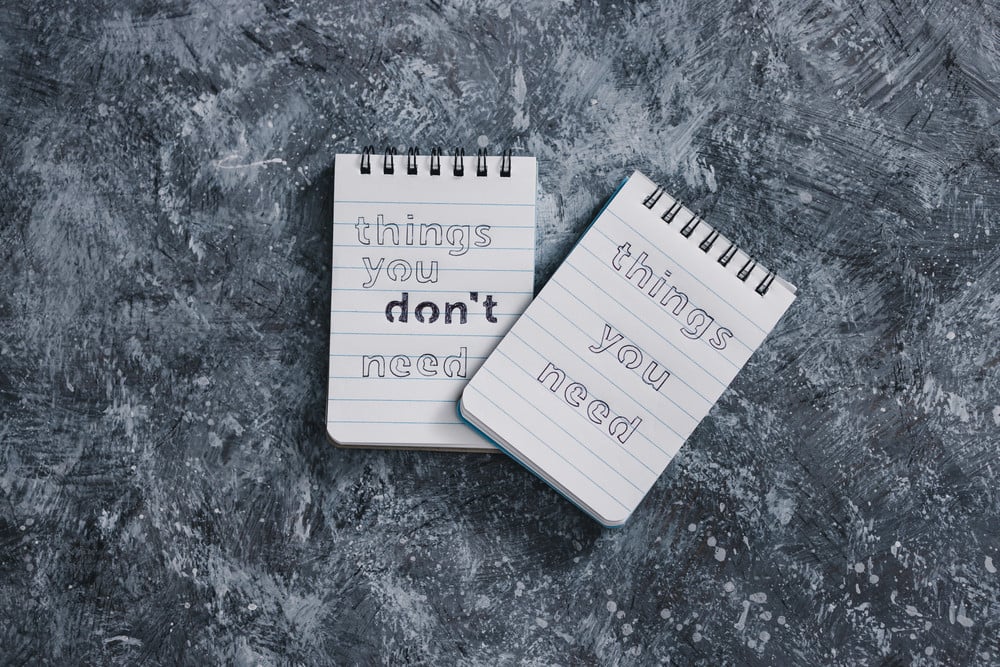
This list will help motivate you to get started and keep you on track throughout the process. Some of your reasons might include saving money, feeling less stressed, having more time to spend with family and friends, or simply having a nicer home!
Reclaim your time!
Americans spend 9.1 years of their lives watching TV, 1.1 years cleaning and 11 hours a day in front of digital media. In particular, women spend 8 years of their lives shopping, 1.5 years doing their hair and nearly 1 year deciding what to wear!
Living a more minimalist lifestyle means we can reclaim some of this wasted time and spend it doing something we love – rather than standing in front of a jam-packed wardrobe despairing over which shoes work with which skirt!
Decide what you love doing and aim to spend your time doing it over these other pointless tasks!
Decide on the value of your items.
Minimalism isn’t about simply getting rid of excess possessions, it’s about choosing to give more weight to those you value the most. Instead of having twenty framed photos that you like, choose to display five that you love. Once you’ve decided which items cannot be parted with, and which you feel more comfortable letting go of, you can begin the process of actually letting go.
Store things out of sight.
If it doesn’t have to be on display, or you don’t use it every day, then put it away. That goes for your juicer, crock-pot, curling tongs etc.
If you can’t eliminate, reduce.
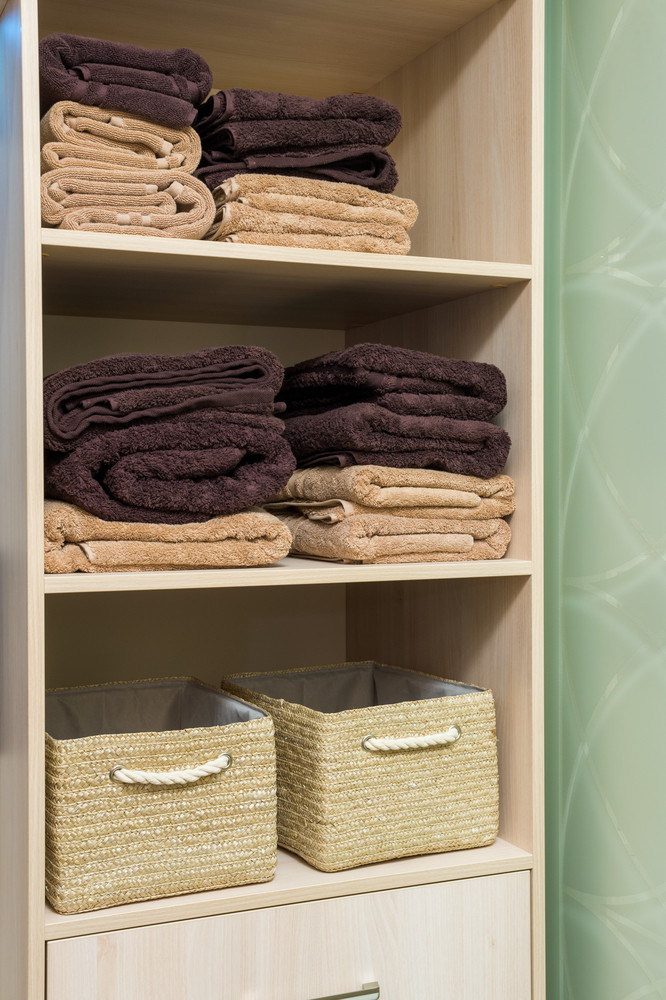
Do you really need ten sets of bedlinen for your two-bedroom apartment? Or twenty bath towels for a family of four? Chances are, you don’t. Donate, dump or repurpose these excess items and free up space.
Sort out your wardrobe.
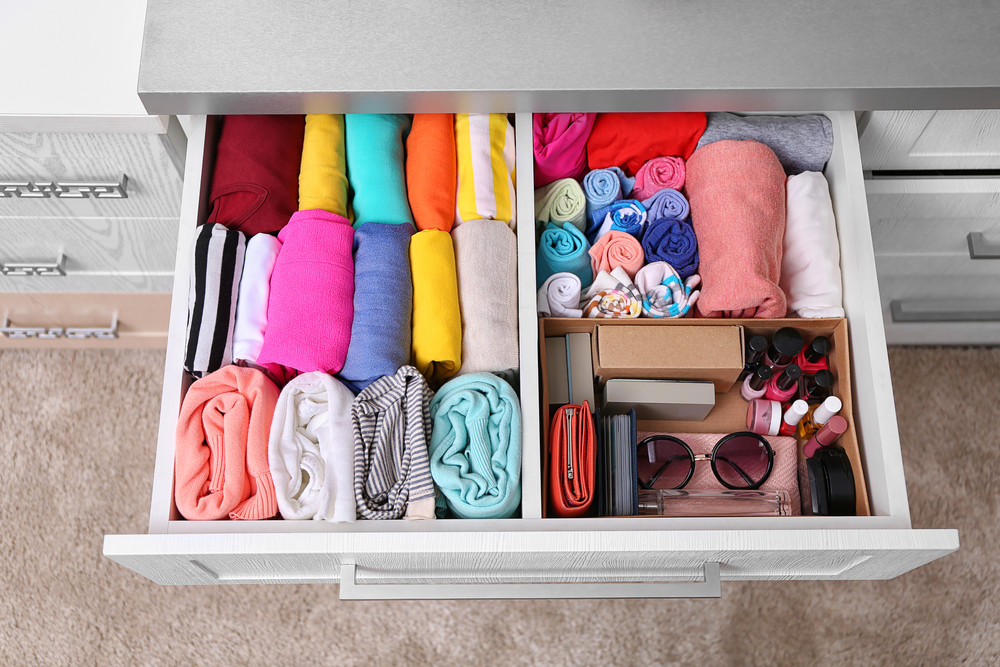
Have you heard of Project 333? This minimalist fashion challenge is so effective that it has been featured on The Today Show website and O, The Oprah Magazine.
Its premise is simple – choose 33 items of clothing (or less) that will see you through the next 3 months and donate or store the rest. Pick classic, neutral pieces and you’ll never be stuck for something to wear. Even better, choosing your outfit every morning will be a cinch.
Set up a charity box.
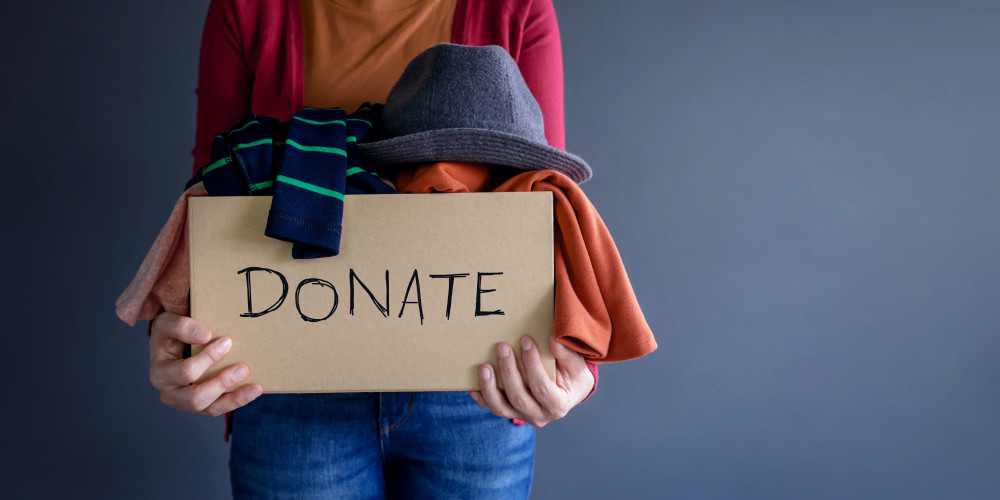
Get the biggest box you can find (or, better yet, get several!) and fill it with all those items you no longer use, or those you value the least. Donate these items to a charity store – you’ll be helping the environment too as producing new items to meet demand wastes a lot of energy and water, and contributes to pollution.
The 6-month box challenge.
This is a great idea for those items you’re on the fence about getting rid of. Like that dress you almost fit into, or that camera you’re going to learn how to use any day now.
Place items like these in a box, seal it and date it. If you haven’t opened it within six months, then it has got to go!
Dump the ‘just in case’ stuff!
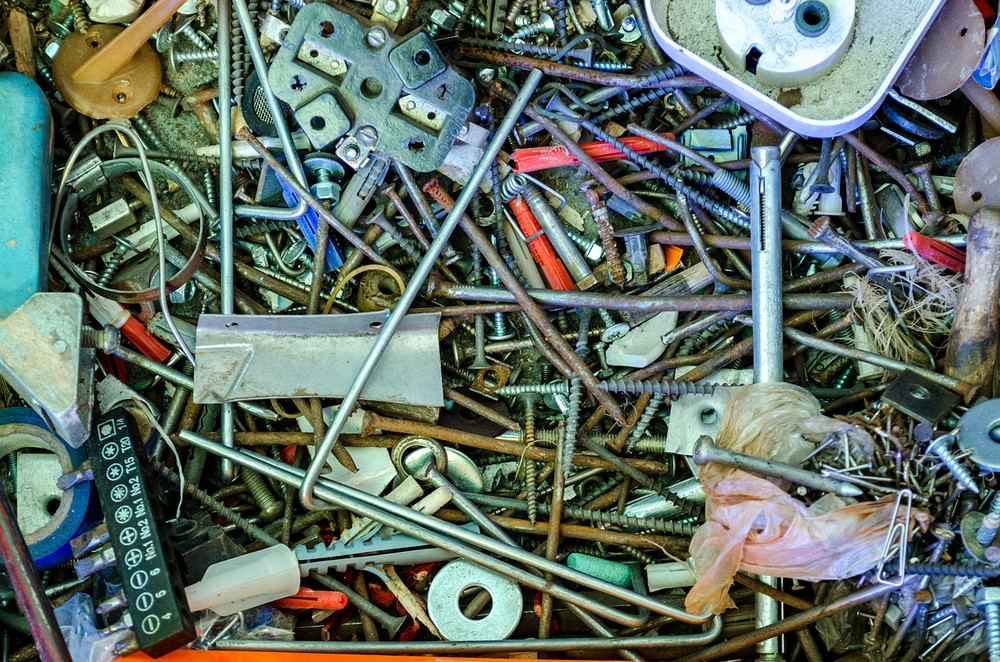
Things like random screws, 6 inch pieces of string, one-off buttons, the end of a roll of insulation tape and all those other junk items you’re hoarding ‘just in case’ have got to go!
Try the 20/20 rule. If you can replace it for $20, and can source it within 20 minutes of your home, then you can get rid of it safe in the knowledge it’s easily replaceable if needed.
Evaluate your sentimental items.
Letting go of sentimental things can often be the hardest. But this brings us back to point number three – ‘decide on the value of your items’. Chances are ticket stubs from concerts you barely remember, or cards from a birthday two decades ago, aren’t bringing you much value.
Simplify your morning routine.
Start the day as you mean to go on…and simplify! Streamline your personal care routine, in your newly de-cluttered bathroom, and then enjoy a simple breakfast in your minimalist kitchen.
Take some time out to stretch, meditate, read, savor your coffee, or do whatever else makes you happy. Just keep it simple.
Clear out your car.
A fuss-free morning ritual and clean home aren’t going to be much good if, the second you step out the door and hop in your ride, you’re confronted with a hoard of sweaters, books, empty coffee cups and candy wrappers. Eliminating the extra weight from your car will help it run more efficiently too.
Simplify the garden.
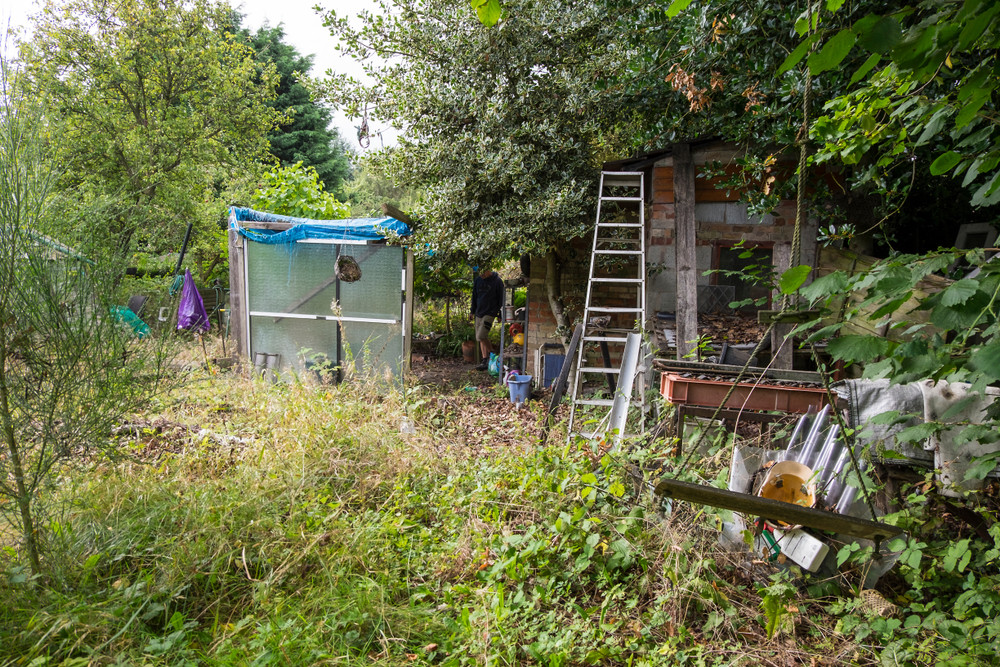
Gardens can be tranquil and calming. But not if they’re filled with junk like dilapidated wooden furniture, overgrown shrubs and out of control weeds.
Spend a therapeutic afternoon outside clearing space and taking in the fresh air so you can enjoy uncluttered views all year round.
Digitize everything.
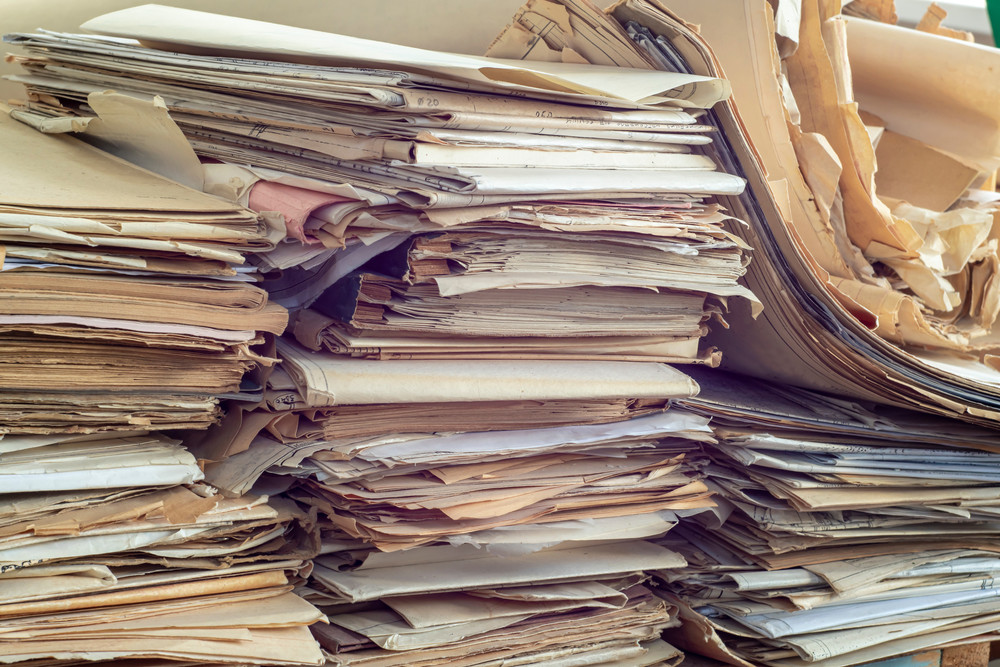
While the digital age can add to the clutter of our lives, sometimes it can be an incredible minimalist tool.
Embrace technology and get rid of the piles of paper on your desk and in your filing cabinet. Actually, once you scan all of your documents, you can get rid of the filing cabinet too.
Digitize your old photos and even those old concert tickets and they’ll be safe forever – backed up to an online storage system.
Embrace new media.
Cancel your magazine subscription and stop buying the newspaper. Not only will Mother Nature be glad, but you will too.
You don’t have to miss out though, as everything you need can be consumed in digital format. While you’re at it, ‘opt out’ of junk mail and sign up for e-banking.
Minimize your old media.
One television is all you need in the house, as is one radio, one phone etc. You can easily record anything you really want to see or hear or catch it again online. Use the time you’re not wasting in front of the box doing things that bring you joy and help you better yourself.
Pare down your social media.
Three out of five US smartphone users can’t go more than 60 minutes without checking their phones. A lot of this is due to the constant stream of incoming messages on our social media feeds – Facebook, Twitter, Instagram, Pinterest, YouTube and a whole lot more.
Unfollow, hide or reset your notifications so that you only receive updates on things you’re truly interested in…or break free altogether!
Take a break from technology.
Every so often take an hour, a day or a whole weekend where you completely switch off from technology.
Enjoy the great outdoors, read, cook, work out or actually have a conversation with your loved ones. You’ll be surprised at how much more enjoyable these moments are without constant digital interruptions.
Borrow, don’t buy.
If you need something for a one-off event, like a party, ask friends or neighbors for extra tableware and equipment. Minimalist bookworms would benefit from joining a library or a book exchange. It’s environmentally conscious and means you don’t miss out or compromise your minimalist values.
Buy experiences, not things.
Instead of treating yourself to a new pair of shoes or yet another expensive perfume, invest in an experience.
Go to a wine tasting class, a cookery demo, try kayaking, or book a weekend break. These things will make memories that last far longer than shoes ever would!
The ’one in, one out’ rule.
If you really have to buy something new, then swap something else out. This way you’re guaranteed not to slip back into your old, clutter-filled ways.
Forget about sales.
Sales are far too tempting…especially for shopaholics! Within an hour or two of hitting a sale, your newly pared down wardrobe will be bursting at the seams and your kitchen will be filled with all sorts of unnecessary gadgets.
Along with the temptation of impulse buying, there’s also the fact that many sale items tend to be lower quality produce that didn’t sell for full whack – meaning they’re just not worth it! Which brings us to the next point…
Quality over quantity.
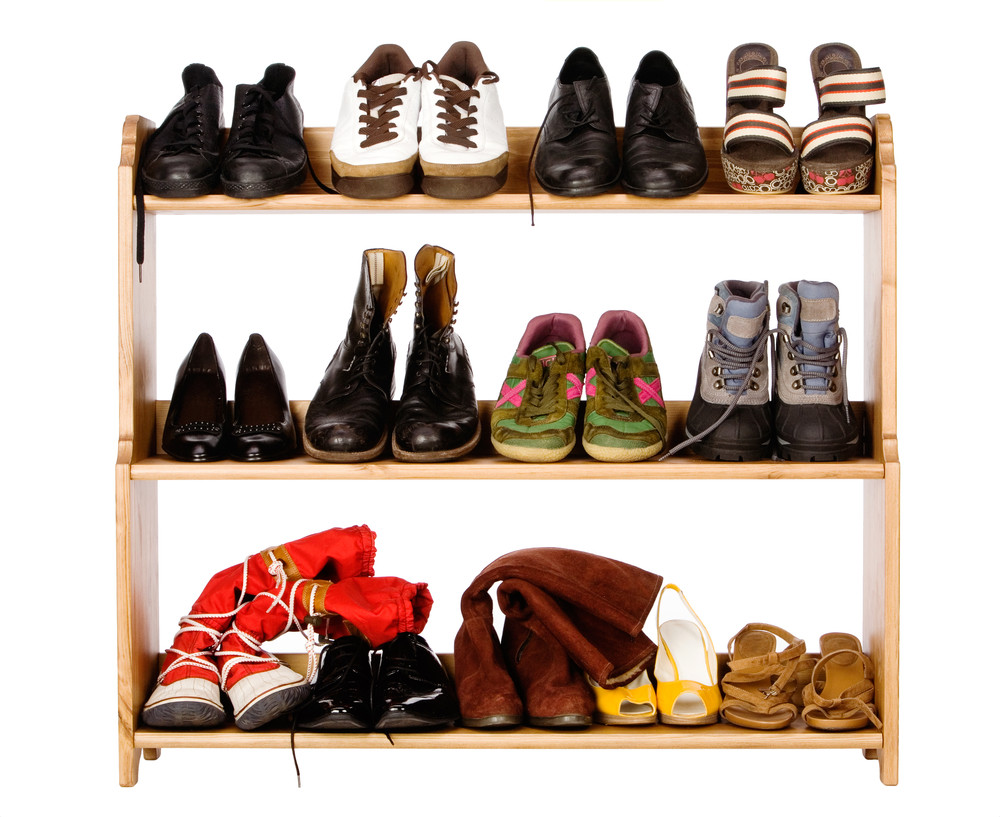
It’s better to have one really good quality, beautiful pair of shoes (or rug or painting etc.) than to have five pairs of mediocre shoes. Even though higher quality items may cost more, they look better, work more effectively and last longer than lower quality items…meaning they work out cheaper over time.
The quality over quantity rule of minimalism goes for all aspects of your life – from friendships to pastimes and parties.
Learn how to say ‘no’.
This can be tricky for many but it’s a vital step in simplifying your lifestyle. Learn how to politely decline offers to events you don’t want to attend; offers of free items; and requests to take on additional responsibility. The more you practice saying ‘no’, the more natural it will become.
Delegate.
Once you’ve perfected the art of politely declining, turn your attention to delegating. Ask other family members to take over their fair share of the cleaning, cooking and grocery shopping and get them involved in de-cluttering the home.
De-clutter your diet.
Bring the minimalist ethos into your pantry. Choose simple, locally grown and organic whole foods. Say good bye to prepackaged junk taking up freezer space and generating a ton of environmentally unfriendly wrapping. You’ll look and feel better in no time.
Cut down on cooking time.
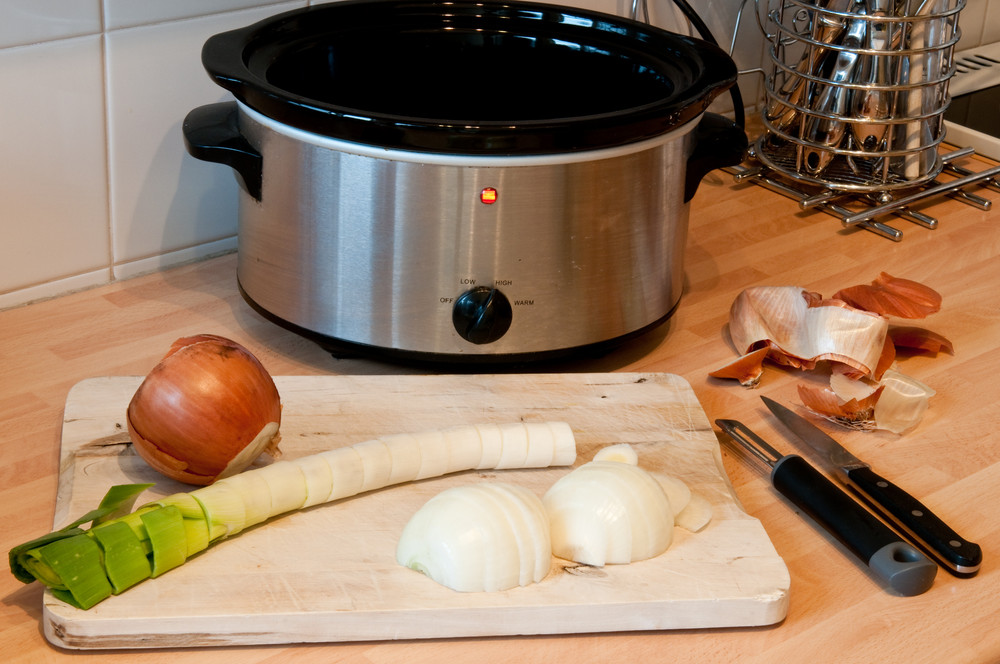
Dust off your crock-pot and set it to simmer away while you relax (here are some delicious crock-pot recipes to try).
Make sure to cook extra for dinner, and have it for lunch the next day. Or batch cook and freeze so you have healthy, fresh and homemade meals on hand leaving your evenings free to spend your time how you really want to.
Use multi-purpose products.
A really simple way to keep a minimalist house is to always keep multi-purpose items on hand.
Take coconut oil for example. It works for cooking and baking, and as a coffee creamer but it can also be used as furniture polish, moisturizer, hair treatment, toothpaste and so much more.
In fact, here are 25 uses of coconut oil from the experts. Items like baking soda, apple cider vinegar, Epsom salt and essential oils also have multiple uses.
Vow to get rid of one item every day.
Ditching just one item every day – no matter how small – means that you’ll have 365 less things to worry about at the end of the year. If you take on the minimalist challenge this year, it’ll be 365 less things!
Forget about perfection.
Perfectionism is futile and unattainable. It’s also a hindrance in your bid to de-clutter your life – think of how many times your need to be perfect has led you to buy something, or take on something extra.
Let go of the need to be perfect – even to be the ‘perfect’ minimalist – and just strive to learn and grow.
Accept that minimalism is a journey.
Minimalism is about achieving a more meaningful life which requires periodic reassessment – of possessions, pastimes, jobs and relationships. Its premise is simple – the more you let go, the more you gain. Keep letting go and see where it takes you!
